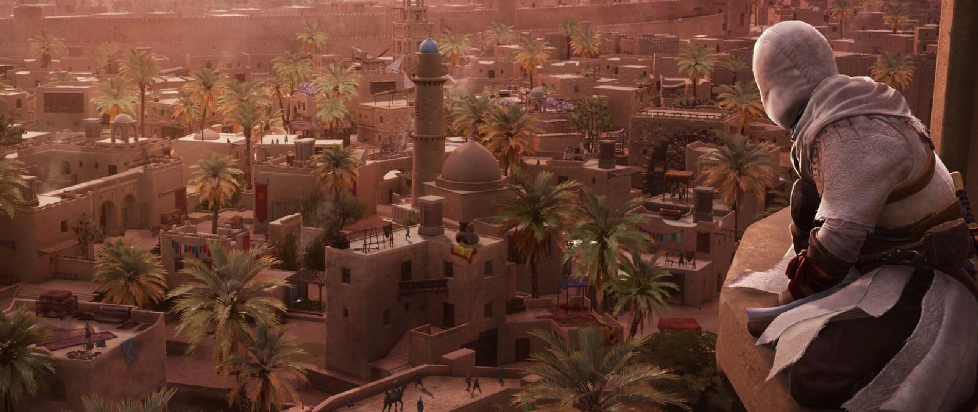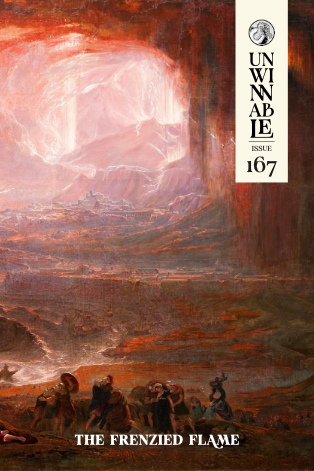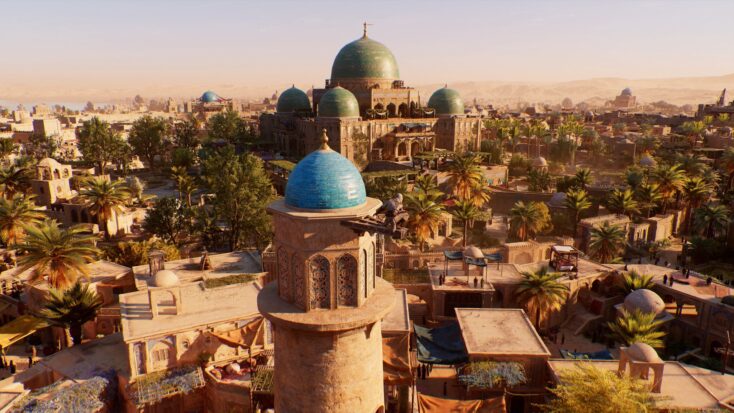
Building Baghdad

This column is a reprint from Unwinnable Monthly #167. If you like what you see, grab the magazine for less than ten dollars, or subscribe and get all future magazines for half price.
———
Architecture and games.
———
I’ve always been impressed by the towns and cities in Assassin’s Creed, but their actual representation has consistently bothered me. Assassin’s Creed Mirage, which takes place during the ninth century in Baghdad, is no exception. The various games in the Assassin’s Creed series are presented as windows into the past, providing players with a picture of what towns and cities would have looked like at the time, something which raises a wide variety of different problems, mostly related to archaeological reconstruction.
Through careful examination and interpretation of artifacts, structures, ruins and remains, archaeologists strive to reconstruct ancient societies, technologies and ways of life. Beneath the romanticized image of researchers meticulously rebuilding ancient cities on the other hand lies a complicated web of issues and problems that challenge the accuracy, ethics and even the validity of archaeological reconstruction. There’s a delicate balance at work between science, interpretation and imagination which is quite easy to upset.
The central challenge in archaeological reconstruction is the inherent tension between interpreting fragmentary evidence and maintaining a semblance of scientific rigor. The majority of archaeological sites lack well preserved or even complete artifacts, records or structures, leaving researchers with limited data to work with when it comes to reconstruction. There’s often a temptation to fill in the gaps with educated guesses, often leading to reconstructions which are more speculative than based on hard evidence.
Archaeologists have to carefully tread the line between using their expertise to extrapolate from existing evidence and letting their imagination run wild, as interpretations can profoundly shape the narratives that we tell about the past. This highlights the need for transparency when it comes to acknowledging the speculative nature of many reconstructions, clearly distinguishing between what is actually supported by the evidence and what is nothing but conjecture. This can be accomplished through a variety of different mechanisms including the use of special materials for the reconstructed components of a structure, but even I must agree that such a process would be unsuitable for a videogame like Assassin’s Creed Mirage.

Archaeological reconstruction isn’t immune to the influence of bias and assumption. Researchers approach their work with a set of preconceived notions about the past, often stemming from their cultural, social or personal backgrounds. These biases can subtly shape the way in which they interpret artifacts and make decisions about archaeological reconstruction. The interpretation of certain artifacts can also be influenced by prevailing theories or trends in the field, leading to the inadvertent distortion of what I can only for lack of a better term call historical accuracy. In order to mitigate these issues, archaeologists have to remain aware of their biases and strive for at least some sense of objectivity. Collaborative methods which include diverse perspectives can also help to counteract unintentional distortions, offering a more holistic understanding of the past.
The ethical dimension of archaeological reconstruction raises concerning and frequently thought-provoking questions about the extent to which the remains of a structure should even be rebuilt in the first place. While reimagining ancient structures can provide a powerful experience for the public, doing so can also raise concerns related to authenticity. How much intervention is acceptable before the reconstruction becomes more of a modern interpretation than a faithful representation of the past is truly a question for the ages. Take for example the city buried in the first century during the eruption of Mount Vesuvius, Pompeii. Many would argue that extensive reconstruction of its buildings can provide visitors with a distorted perception of the original state, blurring the lines between history and creative interpretation. Striking a balance between authenticity and experience remains a significant challenge.
The advent of advanced technologies including digital scans, computer modeling and virtual reality have revolutionized archaeological reconstruction. These tools allow researchers to visualize and share their interpretations with unprecedented accuracy and detail. This technological progress on the other hand isn’t without its pitfalls. The lure of technology can for example sometimes lead to overreliance on simulations and reconstructions which are more impressive than accurate. The danger is that dazzling visual appeal can overshadow the importance of critical thinking and careful consideration of the available evidence, one of the primary problems with Assassin’s Creed. Researchers need to remember that technology should enhance the reconstruction process rather than replace the kind of nuanced interpretation which comes from rigorous analysis of the existing remains, but level designers aren’t bound by this limitation.

Accurate reconstruction demands a deep understanding of the temporal and cultural context of the past. Failing to consider these complexities can result in reconstructions that inadvertently incorporate anachronistic elements or misrepresent the social norms and technologies of the time. Attempting to recreate an ancient building with modern construction techniques might for example produce a structure which is aesthetically pleasing but historically inaccurate. Navigating these temporal and cultural intricacies requires collaboration among experts from various disciplines including archaeology, history, architecture and anthropology. This interdisciplinary approach helps to ensure that reconstructions are not only visually appealing but also grounded in the evidence.
Archaeological reconstructions often find themselves at the intersection of public interest and entertainment. Amusement parks, museums and movies frequently rely on reconstruction to engage their audience and bring history to life, but this accessibility comes with a risk of perpetuating what amounts to misinformation. When reconstructions are presented without a clear explanation of the underlying research, methods and uncertainties involved, people often come to accept them as an accurate picture of the past. This oversimplification of complex historical narrative can lead to misunderstandings and misconceptions, making the presentation of context and caveats a primary responsibility of those involved, something which ideally encourages critical thinking as opposed to passive acceptance.
Archaeological reconstruction is at best a double-edged sword, providing valuable insight into the past while grappling with a host of issues that challenge its accuracy and integrity. As the field continues to change and evolve, these concerns demand to be addressed, hopefully through open dialogue and collaboration among researchers, historians, educators and the public. By acknowledging the complexities and limitations of reconstruction, we can strive for a more nuanced and respectful understanding of our shared human heritage. These problems are crystalized in Assassin’s Creed, videogames being an opportunity to increase public knowledge and understanding, but also to spread falsehood and misinformation.
———
Justin Reeve is an archaeologist specializing in architecture, urbanism and spatial theory, but he can frequently be found writing about videogames, too. You can follow him on Twitter @JustinAndyReeve.




